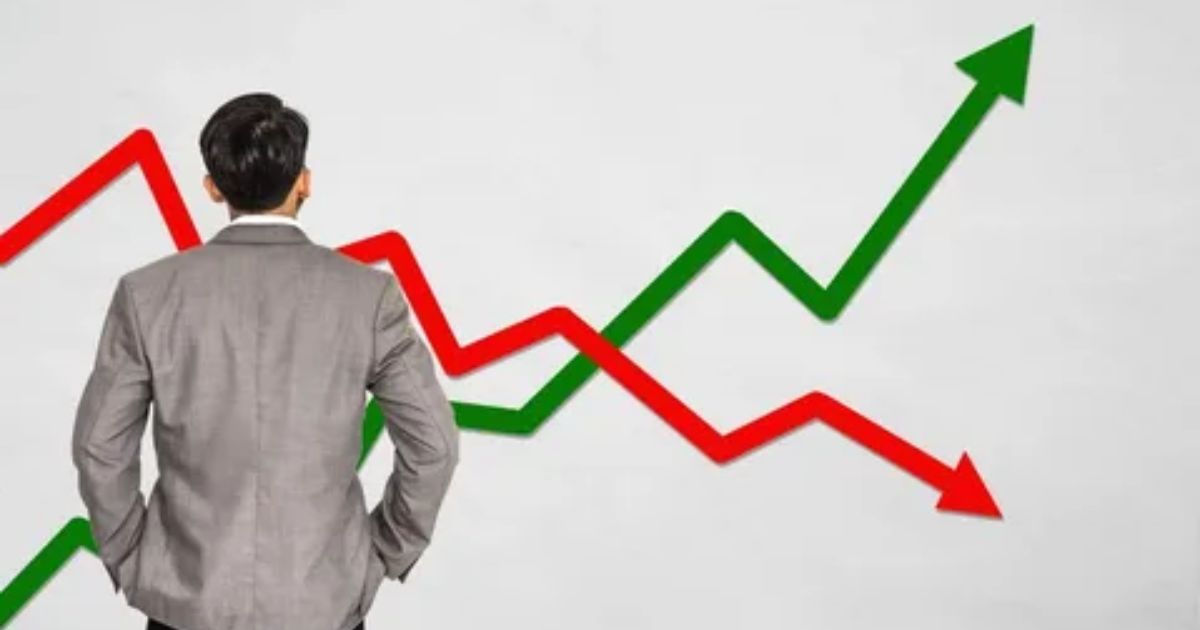In a world of ever-changing financial landscapes, the stock market stands as a barometer of economic activity. Today, we delve into the fluctuations that shaped the market’s trajectory, shedding light on the forces that propelled it upwards or tugged it downwards. Through objective analysis, we explore the sectors that thrived or struggled, providing insights into the broader investor sentiment. Join us as we navigate the intricate tapestry of the stock market, unraveling its mysteries and empowering you with knowledge.
Key Takeaways
- Fluctuations in stock market performance over time require careful analysis of trends.
- Understanding historical trends is crucial for informed decision-making in the stock market.
- Market volatility is influenced by economic factors, geopolitical events, and investor sentiment.
- Economic events, geopolitical events, market sentiment, and investor behavior drive today’s market dynamics.
Historical Trends: Analyzing the Stock Market’s Performance Over Time
Historically, the stock market has exhibited fluctuations in its performance over time, demonstrating the need for a careful analysis of its trends. By analyzing patterns and observing the long-term performance of the stock market, investors can gain valuable insights into its behavior. Understanding historical trends allows investors to make informed decisions and devise strategies that can potentially mitigate risks and maximize returns. Long-term performance analysis provides a broader perspective on market movements, highlighting the overall trajectory and identifying underlying factors that drive market behavior. This analysis helps investors identify potential opportunities for growth and navigate through periods of volatility. Speaking of market volatility, understanding the ups and downs in the stock market requires a comprehensive understanding of the factors that contribute to its fluctuations. Let’s delve into this topic in the subsequent section.
Market Volatility: Understanding the Ups and Downs in the Stock Market
In order to effectively navigate the stock market’s ups and downs, investors must remain vigilant of the various factors that contribute to market volatility and employ strategies that can withstand fluctuations. Market volatility refers to the rapid and significant changes in the stock market, which can be caused by a range of factors, such as economic indicators, geopolitical events, and investor sentiment. Understanding market volatility is crucial for investors as it can impact their investment decisions and overall portfolio performance. Here are three key points to consider:
- Economic Factors: Economic indicators, such as GDP growth, inflation rates, and interest rates, can greatly influence market volatility. Changes in these factors can affect the profitability and outlook of companies, leading to fluctuations in stock prices.
- Geopolitical Events: Political instability, trade wars, and global conflicts can create uncertainty in the stock market, causing heightened volatility. These events introduce risks that investors must assess and navigate to make informed investment decisions.
- Investor Sentiment: Market sentiment, based on investors’ emotions and perceptions, can drive stock market fluctuations. Positive sentiment can lead to bullish markets, while negative sentiment can trigger bearish markets. The collective actions of investors can amplify volatility, making it important to understand and analyze investor sentiment.
Factors Impacting Today’s Market: Examining the Events and Influences Driving the Market’s Movement
Three major events and influences are currently driving the movement of today’s market, impacting investor sentiment and stock prices. Firstly, economic events such as changes in interest rates, GDP growth, and inflation rates play a significant role in shaping market dynamics. Investors closely monitor these events as they can signal the overall health of the economy and impact corporate earnings. Secondly, geopolitical events such as trade disputes, political instability, and global conflicts can create uncertainty and volatility in the market. Investors react to these events by adjusting their portfolios and risk tolerance. Lastly, market sentiment and investor behavior, driven by factors such as fear, greed, and market trends, can greatly influence stock prices. Understanding these market drivers is crucial for investors to make informed decisions. Now, let’s transition into the subsequent section, where we will explore how different industries and sectors fared in today’s market.
Sector Analysis: Exploring How Different Industries and Sectors Fared in Today’s Market
Investors are analyzing and comparing how different industries and sectors performed in today’s market. This sector performance analysis allows them to identify winners and losers and make informed investment decisions. Here are three key takeaways from today’s market:
- Technology sector: The technology sector continued to show strength, with major companies like Apple and Microsoft posting solid gains. The increasing reliance on technology amid the pandemic has boosted the performance of tech stocks.
- Energy sector: The energy sector struggled today, with oil prices dropping due to concerns about oversupply and global demand. Companies in the oil and gas industry faced significant losses as a result.
- Healthcare sector: The healthcare sector remained relatively stable, with pharmaceutical companies benefiting from ongoing developments in COVID-19 vaccines and treatments. However, some healthcare providers faced challenges due to the strain on resources caused by the pandemic.
Overall, today’s market showcased a mixed bag of results across different sectors, highlighting the importance of sector analysis in determining investment strategies.
Investor Sentiment: Assessing the Overall Mood and Confidence of Investors in the Market
An assessment of investor sentiment reveals the current mood and confidence levels of market participants. Understanding the investor mood is crucial as it can significantly impact market dynamics. Assessing confidence allows investors to make informed decisions and anticipate potential market trends. Currently, investor sentiment remains cautiously optimistic, with a slight shift towards increased confidence. This can be attributed to positive economic indicators, such as strong corporate earnings, low unemployment rates, and the progress in COVID-19 vaccination efforts. However, there are still lingering concerns, such as inflationary pressures and geopolitical tensions, which can dampen overall confidence. It is important for investors to closely monitor market developments and stay informed to navigate the potential risks and opportunities that may arise. By assessing confidence and investor mood, market participants can better position themselves for success in today’s dynamic and ever-changing market environment.
Frequently Asked Questions
What Is the Current Price of a Specific Stock?
The current price of a specific stock refers to the value at which it is currently trading in the stock market. It is determined by various factors and reflects the overall performance of the stock in the market.
How Do I Invest in the Stock Market?
To invest in the stock market, it is important to understand various investing strategies and conduct thorough stock market analysis. By following these practices, investors can make informed decisions and potentially achieve their financial goals.
What Are the Tax Implications of Investing in the Stock Market?
Investing in the stock market has tax implications, particularly in relation to capital gains. Understanding the tax rules and regulations is crucial for investors, as it helps them make informed decisions and manage their investment portfolio effectively.
What Are the Different Types of Stock Market Orders?
There are various types of stock market orders, each serving a specific purpose. These include market orders, limit orders, stop orders, and trailing stop orders. Limit orders provide the benefit of controlling the price at which a trade is executed.
How Can I Protect My Investments From Market Volatility?
In the face of market volatility, protecting investments requires the implementation of diversification strategies and risk management techniques. By spreading investments across different asset classes and employing hedging strategies, investors can mitigate potential losses and preserve long-term wealth.
Conclusion
In conclusion, today’s stock market reflected a mix of positive and negative movements. While some sectors experienced growth and upward trends, others faced declines and volatility. The market’s performance can be attributed to various factors, including economic events, political influences, and investor sentiment. Overall, the stock market’s behavior today can be compared to a roller coaster ride, with its ups and downs keeping investors on their toes.










